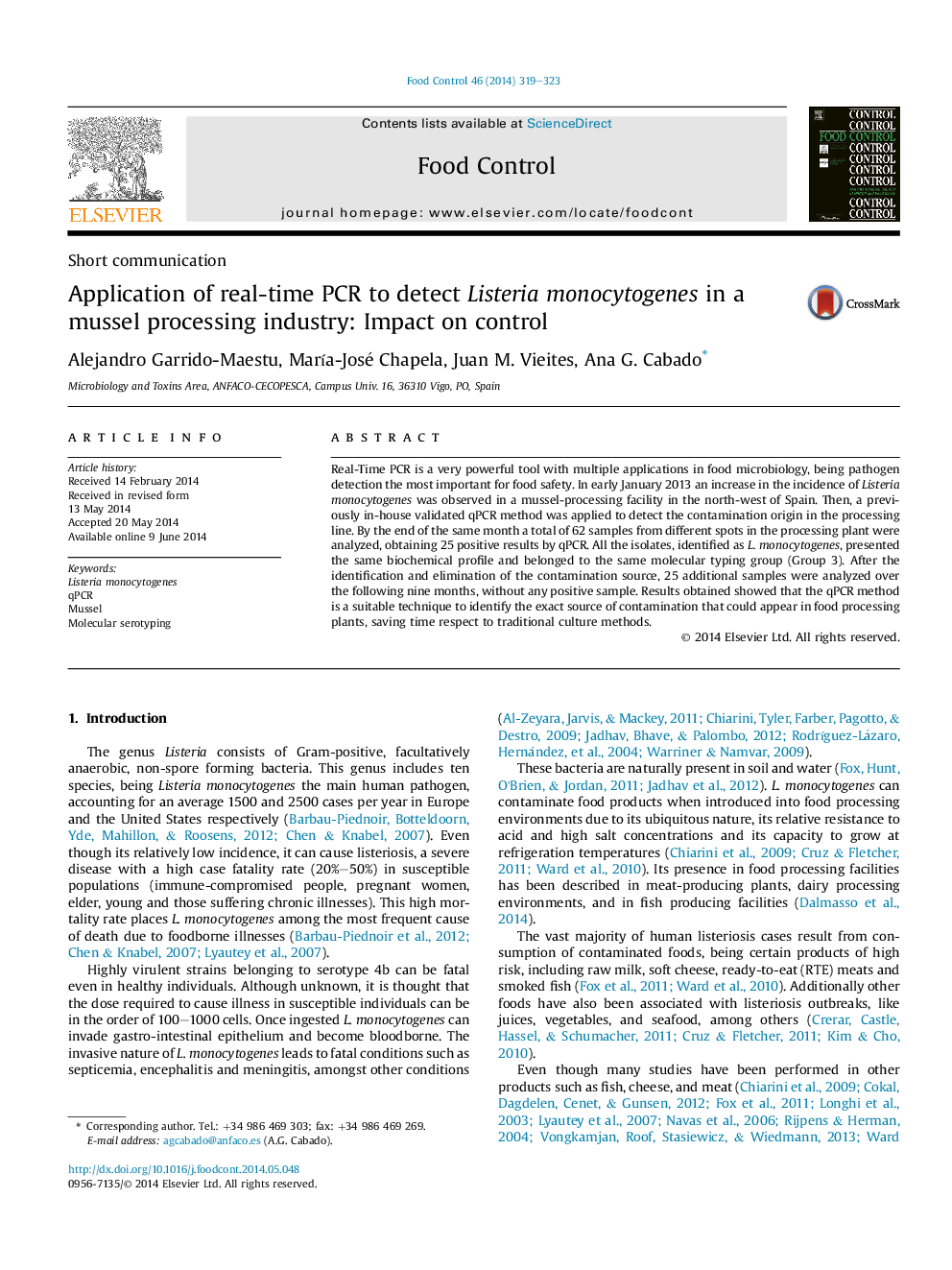| Article ID | Journal | Published Year | Pages | File Type |
|---|---|---|---|---|
| 6391234 | Food Control | 2014 | 5 Pages |
â¢Increase in the incidence of L. monocytogenes in mussel detected by qPCR.â¢62 samples were analyzed in a month, with 25 positives.â¢Difficult access spot identified as the source of contamination.â¢Molecular and biochemical characterization showed same patterns.â¢A 9 month follow study did not show any other positives.
Real-Time PCR is a very powerful tool with multiple applications in food microbiology, being pathogen detection the most important for food safety. In early January 2013 an increase in the incidence of Listeria monocytogenes was observed in a mussel-processing facility in the north-west of Spain. Then, a previously in-house validated qPCR method was applied to detect the contamination origin in the processing line. By the end of the same month a total of 62 samples from different spots in the processing plant were analyzed, obtaining 25 positive results by qPCR. All the isolates, identified as L. monocytogenes, presented the same biochemical profile and belonged to the same molecular typing group (Group 3). After the identification and elimination of the contamination source, 25 additional samples were analyzed over the following nine months, without any positive sample. Results obtained showed that the qPCR method is a suitable technique to identify the exact source of contamination that could appear in food processing plants, saving time respect to traditional culture methods.
